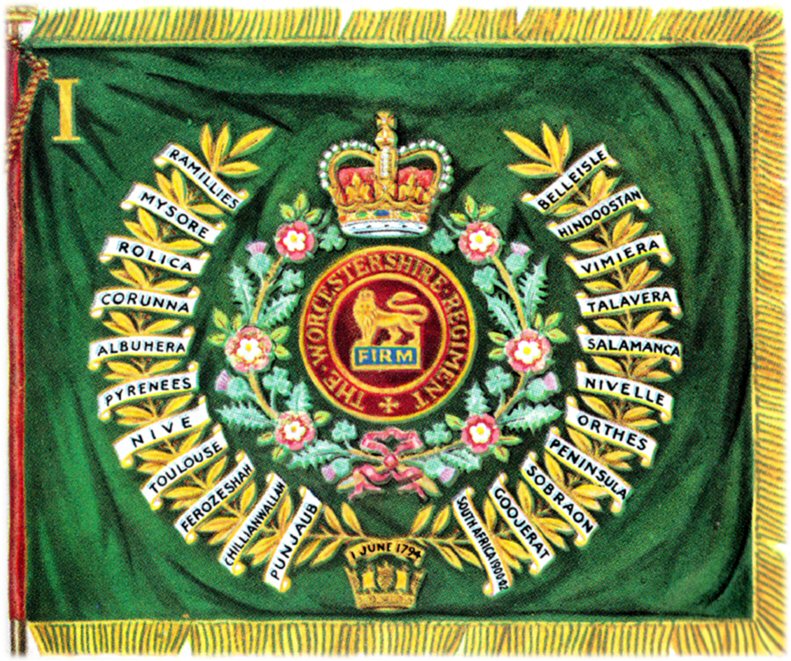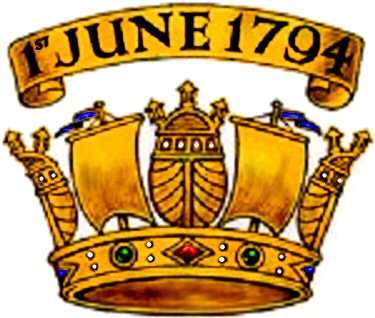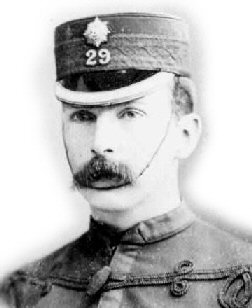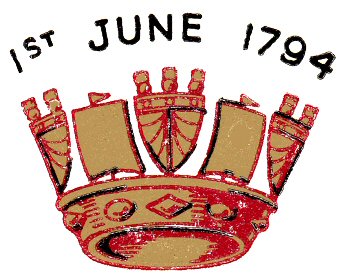The Naval Crown
The history of the Naval Crown goes back to Roman times when a crown embellished with a design of beak heads of captured warships was awarded for bravery and was known as the "Rostral Crown". It may also be seen on some British Naval medals at the end of the 16th century. The Naval Crown is made up of alternate sterns and topsails of ships. One of the earliest examples of the naval crown in its present form, appears above the Arms of Greenwich Hospital, this dates from dating about 1700. In this case the decoration however, is wholly of square sails without the interspersed sterns. During the 18th century, the naval crown in its present form was often used by heralds when granting Arms to naval officers. Lords Nelson and Collingwood added the crown to their own coats-of-arms. Today the naval Crown surmounts the badges of Royal Naval ships. The Merchant Navy did not adopted the naval crown until 1918 at the same time of the introduction of their official uniform. When the Naval Crown was awarded as battle honour it is common for the date to be shown above the crown. |
|
In 1793 the 29th (Worcestershire) Regiment served as Marines on board H.M.S. Edgar, where they were fortunate to capture a Spanish ship of such valuable cargo that every sergeant in the Regiment received as a share of the prize money £300, and every private received £60. Still serving as Marines in the following year, 1794, they fought against the French Fleet in the famous action under Lord Howe, known as the "The Glorious First of June"
"The Glorious First of June" became a great tradition in the Worcestershire Regiment. The victory has been commemorated in several different ways. Soon afterwards the design of the regimental button was changed and the button, previously plain and simply bearing the number, was ornamented with a laurel wreath. That wreath was said to commemorate the battle, and was retained until the general change, of uniform after the Crimean War. It is possible also that the regimental device of the Royal Lion, for which the earliest date definitely known is 1797, may have been granted to reward the gallantry then shown. But the practice of embroidering the names of battles on the Regimental Colours had not then been introduced, and no battle-honour for that engagement was shown officially until 1909, when it was decided that Naval battles which possessed no definite name should be commemorated on the colours of regiments which had taken part by the device of a Naval Crown with the appropriate date; and both The Queen's Royal West Surrey Regiment and the Worcestershire Regiment were granted the device which became one of the most cherished honours. Apart from being one of the few battle honours for service on ship-board, this device is also remarkable as being almost the only instance of a battle honour given for the services of detachments — for the rule, which in nearly all cases has been strictly enforced, is that headquarters and the greater part of a battalion must be present in order to qualify for a distinction on its Colours. In 1895, the then Major Hugh E. E. Everard wrote to Lieut.-Colonel John Francis Egerton who was commanding the 2nd Battalion Worcestershire Regiment at the time, and shows how the granting of the battle honour of "the Glorious 1st June" was initiated. Interestingly, Lieut.-Colonel John Francis Egerton great uncle was Ensign Charles Buckeley Egerton who served on board H.M.S. Thunderer on the 1st June 1794: |
Major Hugh E. E. Everard |
THURSDAY, 27TH JUNE, 1895.
NORTON CAMP,
WORCESTER
Dear Egerton,
At the 29th Regimental Dinner the other day H.R.H. of Saxe Coburg & Gotha, who was presiding at the Royal Marine dinner, sent in to say they were drinking our health. General J. J. H. Gordon went back to respond and told the Duke we had on several occasions served as marines, amongst others in Lord Howe's Victory over the French off Ushant on Glorious 1st June, 1794. H.R.H. was very interested and said: "If the Colonel of the Regtiment would like to have it on the Colour, I think I can get it and would speak to the Queen about it." He deputed Colonel N. F. Way, C.B., Commanding Plymouth Division of Marines to take the notice to us. Colonel Way turned out to be a nephew of Major Way, who gave us a centrepiece a few years ago. In case he had any other information, for he told me a few things at the dinner I wrote to him last week, and he wrote that H.R.H. S.C. & G. would be pleased to do what he could as to the scroll for the Naval action. I have written to Len, but of course you are the senior Colonel. General Gordon is at the Horse Guards. L.G. great pal of the C in C., perhaps he might help, should you feel inclined to apply for it. I think it is an opportunity not to be lost, could you not get some old 36th actions added. de Berneire I think tried for some a few years ago. General Gordon said, whoever applied should write to the Duke of S.C. & G. and remind him of what he said when dining with the Marines at Hotel Metropole 6th June. I came here yesterday and thought I had Colonel Way's letter, but find it is left behind in Norfolk. The 29th served as Marines in 1742, 1776, 1790 and 1793 to 97. Your uncle C. Bulkeley Egerton was on board the Thunderer on Glorious 1st June (our total losses were three officers and 43 rank and file killed and wounded). The 36th were raised as Marines were they not? From 1802 to 57 the 29th always had a wreath of laurels on forage cap, chacoplate and buttons, which I was told was in consequence of service as Marines, whose badge is a Globe encircled by laurel wreath. I think the old 36th note paper die had a laurel wreath. As you will find on p. 413 of 29th Records, we used to sound off "Hearts of Oak" as late as 1838 and when I left they used to play "Rule Britannia." Am writing in great haste. We hear that Colonel Temple takes up his billet at York on Tuesday week and that de Berneire comes here. I hope so.
Yours sincerely,
Taddy.
Notes: 1. Major Hugh E. E. Everard referred to himself as "Taddy" 2. H.R.H. of Saxe Coburg & Gotha (H.R.H. S.C. & G.) was the second son of Queen Victoria ans Price Albert, also known as Albert Duke of Edinburgh. 3. de Berneire was Lieut.-Colonel Henry John de Berneire who commanded the 2nd Battalion Worcestershire Regiment from 1889 to 1893 4. "Len" refers to Major Arbuthnot Lenox-Conyngham who was commanding the Worcestershire Regiment Depot at the time. 5. C in C is Commander-in-Chief 6. C. Bulkeley Egerton is Ensign Charles Buckeley Egerton who later became General Sir Charles Bulkeley Egerton, G.C.M.G., K.C.H. |
|
The honour of using the Naval Crown was not granted to the Worcestershire Regiment until 1909 and was then added to the Regimental Colours. Sadly, Lieut.-Colonel John Francis Egerton did not live to see the Naval Crown battle honour added to the Regimental Colours, as he died on the 26th December 1898, age 52.

The 1st Battalion Worcestershire Regiment Colours of 1960 above clearly show the Naval Crown at the bottom as a battle honour



